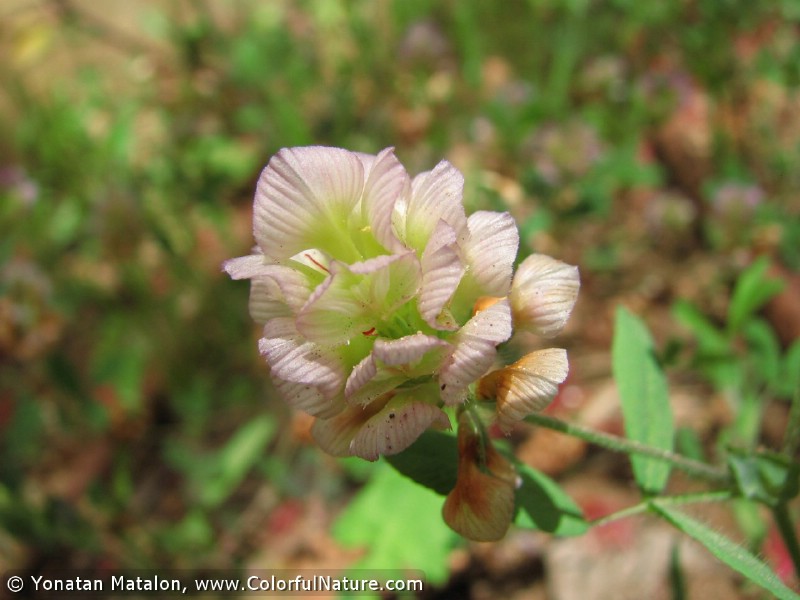Trifolium grandiflorum: Red Data Book of Armenia

VU* B 1 ab(i,ii,iii,iv) + 2 ab(i,ii,iii,iv)
Category. Vulnerable species. The extent of occurrence and the area of occupancy are less than 500 km2. It was not included in the first edition of the Red Data Book of Armenia. It is not included in the Annexes of CITES and that of the Bern Convention.
Description. Annual plants 10–30 cm. Terminal leaflet on small petiole, lateral ones sessile. Inflorescense loose, capitate, 8–20–flowered. Calyx almost glabrous, 2 upper teeth much shorter than 3 basal ones. Corolla violet, after flowering dark violet. Flag 9–11 mm long, in upper part widened into flabellate lamina 5–7 mm wide, in lower part narrowed into cuneate claw.
Distribution. In Armenia it occurs only in Meghri (surroundings of Agarak, Karchevan, Lehvaz, Kuris, Nyuvadi villages) floristic region. EOO is 150 km2, AOO is 12 km2, the number of locations is 3. Besides Armenia the species grows in Talish, South–East Europe, South–West Asia, Anatolia, Iraq, Iran.
Ecological, biological and phytocoenological peculiarities. Grows in lower mountain belt, at the altitudes of 800–1100 meters above sea level, on dry stony and rocky slopes, in shibliak, among phryganoid vegetation. Flowering from May to June, fruiting in June.
Limiting factors. Restricted extent of occurrence and area of occupancy, small density of the population, loss/degradation of habitats caused by the expansion of the mining industry.
Conservation actions. No conservation actions. Necessary: establishment of specially protected nature area in vicinity of Agarak settlement of Meghri region, monitoring of the population state.
Suggestions
 The Ministry of Environment sent a letter international partners to draw their attention to the real danger of environmental disasters as a result of Azerbaijan's large-scale aggression towards the territory of Armenia
The Ministry of Environment sent a letter international partners to draw their attention to the real danger of environmental disasters as a result of Azerbaijan's large-scale aggression towards the territory of Armenia
 Vicia pisiformis: Red Data Book of Armenia
Vicia pisiformis: Red Data Book of Armenia
 Vavilovia formosa: Red Data Book of Armenia
Vavilovia formosa: Red Data Book of Armenia
 Trigonella capitata: Red Data Book of Armenia
Trigonella capitata: Red Data Book of Armenia
 Trigonella astroides: Red Data Book of Armenia
Trigonella astroides: Red Data Book of Armenia












